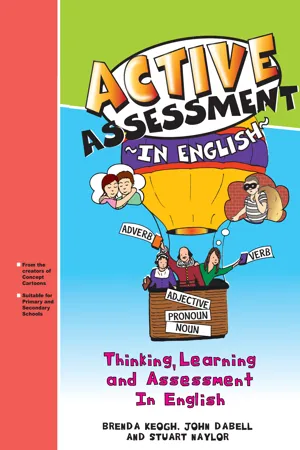
Active Assessment in English
Thinking Learning and Assessment In English
- 188 pages
- English
- ePUB (mobile friendly)
- Available on iOS & Android
Active Assessment in English
Thinking Learning and Assessment In English
About This Book
Everybody seems to be talking about Assessment for Learning. This book shows you how to do it.
The thinking behind the highly influential 'Assessment for Learning' approach is translated into usable and practical strategies for all those teaching literacy in primary and secondary classrooms.
The authors show how thinking, learning and assessment can be linked together in a creative and integrated fashion, so that thinking promotes learning, learning enables assessment to take place and assessment acts as a stimulus to both thinking and learning.
Concise teachers' notes for a broad range of dynamic techniques explain for each:
- what the approach is
- how you use it for assessment
- how you can manage it in the classroom
- how it helps with learning.
Downloadable resources are included with all of the activities and ideas that can be used on Interactive Whiteboards. Active Assessment for English will prove inspiring reading for all literacy teachers at primary and secondary levels, LEA advisers and inspectors.
Frequently asked questions
Information
PART 1
Introduction
Using this book and CD ROM




Active assessment in English
Building on research
Assessment and learning
Assessment makes a difference
Learning through assessment
Talk, collaboration and assessment
Table of contents
- Cover Page
- Title Page
- Copyright Page
- Acknowledgements
- Table of Contents
- Index of active assessment strategies and activities
- Part 1
- Part 2
- Part 3